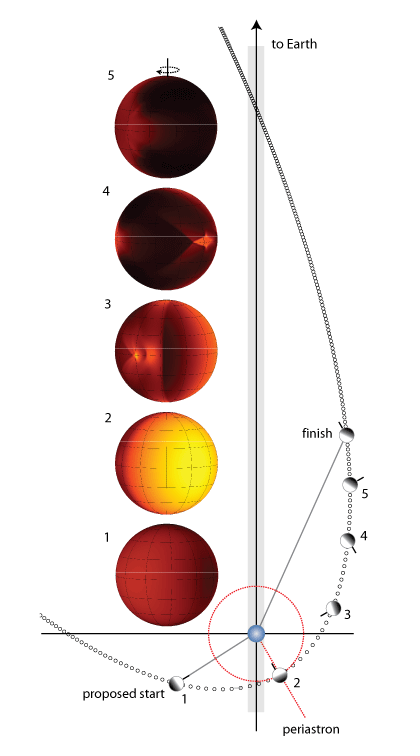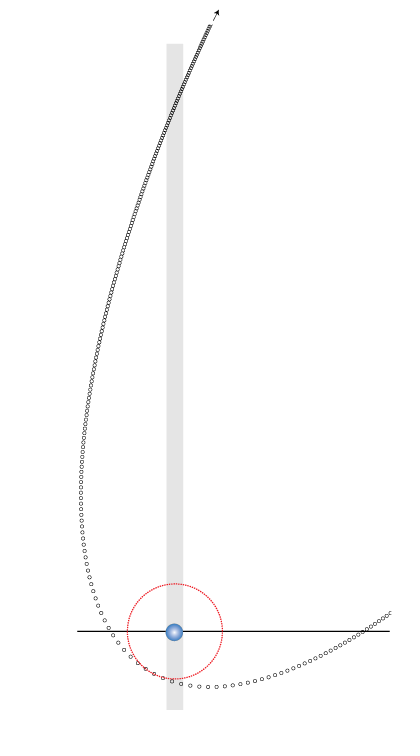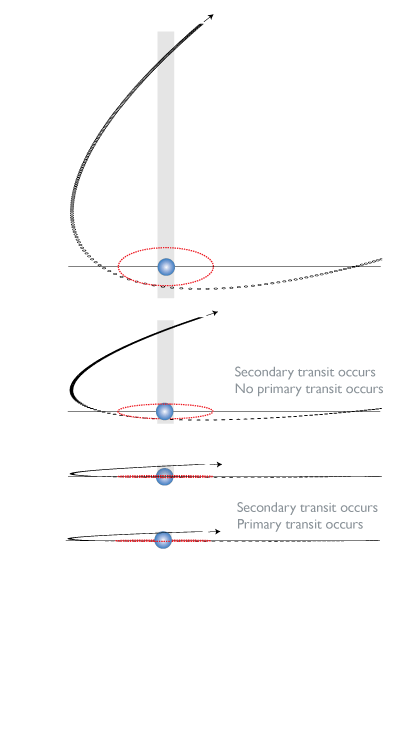
Happy ‘606 day!
HD 80606b swung through periastron at about 01:40 UT this morning (Feb. 8, 2009) and will spend the balance of the week spinning out toward inferior conjunction, which will occur at 00:50 UT on Valentine’s day (Feb. 14th).
Proposals for GO-6, the first general observing cycle of the forthcoming Spitzer Warm Mission, were due on Friday. Jonathan and Drake and I worked right down to the 5 PM PST wire, polishing our request to complement the Nov. 2007 8-micron periastron observations with a pair of additional photometric time series at 4.5 microns (Warm Spitzer’s longest IR wavelength). Two HD 80606b events are observable during GO-6; the first at the very start of the warm mission on May 30, 2009, and the second on Jan 08, 2010. We’re keen to watch the planet ring down from its maximum brightness, so we’ve proposed for a window that runs from 10 hours before periastron to 30 hours after periastron. In the 4.5 micron bandpass, we’re predicting a maximum planet-to-star flux ratio of a bit more than one part in a thousand — easily within Spitzer’s sensitivity.
Here’s a diagram showing the portion of the orbit that we’re proposing to observe. Even though the orbital period is 111.43 days, our forty-hour proposed observation encompasses more than 200 degrees of true anomaly. A planet with e=0.932 is quite truly anomalous.

In the near term, though, I’m very eager to see what shows up in my inbox on Valentine’s day, when observers across the Northern Hemisphere will be monitoring HD 80606 to ascertain whether a primary transit for the planet can be observed.
Here’s the geometric situation. If HD 80606’s orbit were inclined only negligibly to the sky plane, then Earth’s view of the system would be a simple reflection of the standard diagram. At inferior conjunction, six days after periastron, the planet is heading away from the star and slightly toward Earth:

The occurrence of the secondary transit tells us, however, that the orbital inclination relative to the sky plane is in reality close to 90 degrees. Using the Illustrator scale tool to compress along the north-south direction, we can see the result of increasing the inclination.

“Sooner can a camel thread the eye of a needle…”
